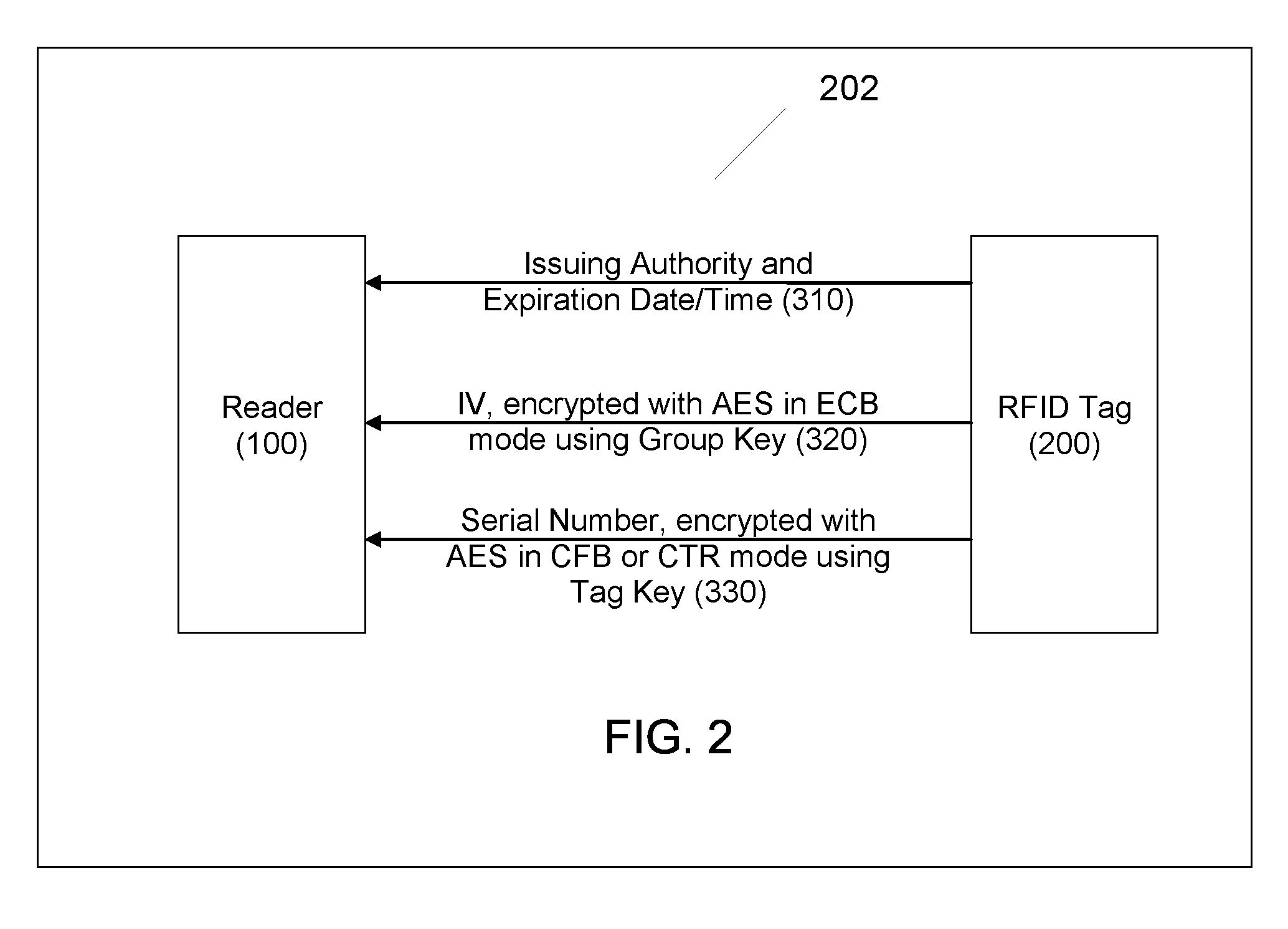Systems and methods for preventing transmitted cryptographic parameters from compromising privacy
- Summary
- Abstract
- Description
- Claims
- Application Information
AI Technical Summary
Benefits of technology
Problems solved by technology
Method used
Image
Examples
Embodiment Construction
.”
BRIEF DESCRIPTION OF THE DRAWINGS
[0027]Features, aspects, and embodiments are described in conjunction with the attached drawings, in which:
[0028]FIG. 1 is a diagram illustrating an exemplary RFID system; and
[0029]FIG. 2 is a diagram illustrating an RFID system configured in accordance with one example embodiment.
DETAILED DESCRIPTION
[0030]In the embodiments described below, transmitted privacy-sensitive cryptographic parameters are themselves encrypted in order to maintain the privacy of the user of the transmitting device. The encryption method used can be one that does not require privacy-sensitive cryptographic parameters of its own. In one embodiment, symmetric cryptography, e.g., AES is used, with the cryptographic key used in the encryption being a Group Key that can be selected in a way that doesn't compromise privacy. For example, a unique Group Key can be associated with a tuple consisting of an Issuing Authority and Expiration Date. In many embodiments, neither component...
PUM
 Login to View More
Login to View More Abstract
Description
Claims
Application Information
 Login to View More
Login to View More - R&D
- Intellectual Property
- Life Sciences
- Materials
- Tech Scout
- Unparalleled Data Quality
- Higher Quality Content
- 60% Fewer Hallucinations
Browse by: Latest US Patents, China's latest patents, Technical Efficacy Thesaurus, Application Domain, Technology Topic, Popular Technical Reports.
© 2025 PatSnap. All rights reserved.Legal|Privacy policy|Modern Slavery Act Transparency Statement|Sitemap|About US| Contact US: help@patsnap.com



